September 7–October 26, 2025
Exhibition with members of the Corridor Eenenzestig art circle in Sittard, at the DaaWa Huizinga Molom gallery.
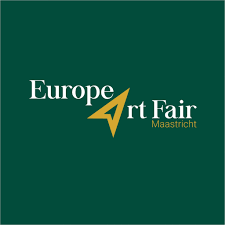 The latest paintings on display at the Europe Art Fair at Mecc Maastricht.
The latest paintings on display at the Europe Art Fair at Mecc Maastricht.
2025.
Saturday, September 13, from 12:00 PM to 9:00 PM.
Sunday, September 14, from 11:00 AM to 5:30 PM.
Poem by Jacques Smeets for a painting made at the opening of the exhibition in the Uit de Kunst gallery in Bingelrade.
He wrote this poem after seeing the painting Kubutopia below.


where Limburg is at its most beautiful, amidst rolling hills and flowering trees. On view until July 18, 2025.
It was busy on this Art Route in Schimmert on this sunny April 27, 2025. Many people visited the Pastorie in Schimmert. I can look back on a successful exhibition.
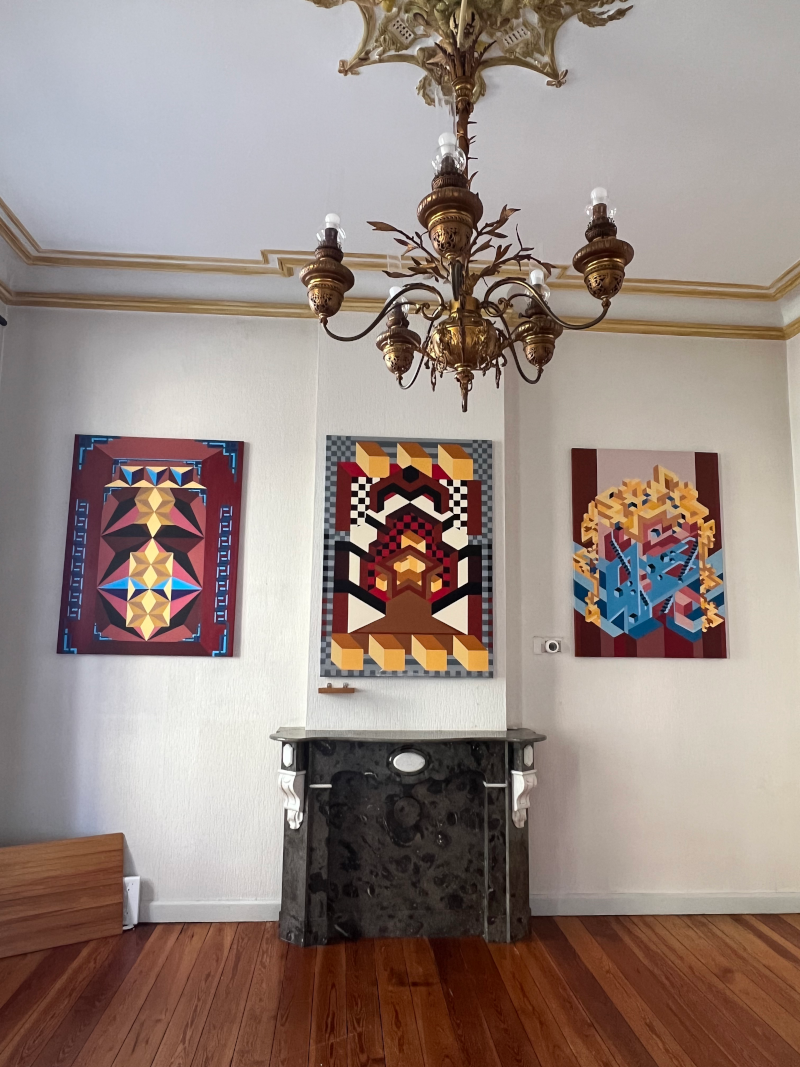
Ook mijn schilderijen zijn te bezichtigen tijdens deze expositie!
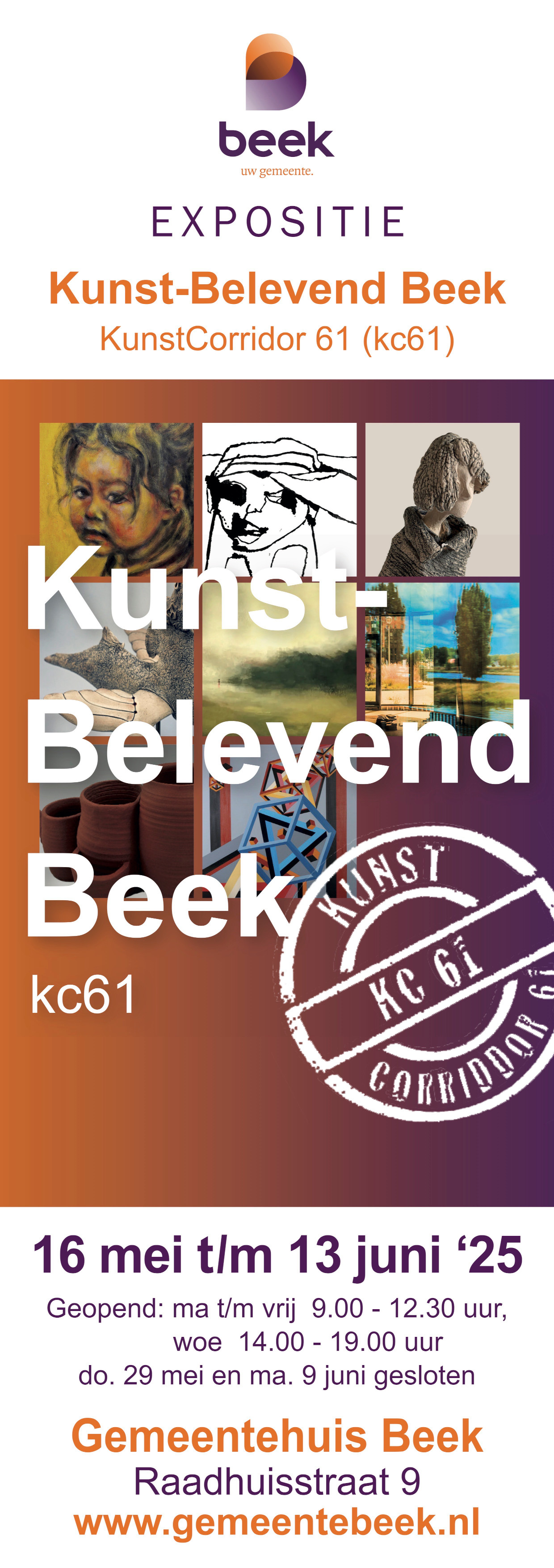
On April 27, 2025 I will participate in the Schimmert Art Route.
13 april 2025.
In the museum of women. Artists' talk with moderator Rick Vercauteren, art historian and publicist.
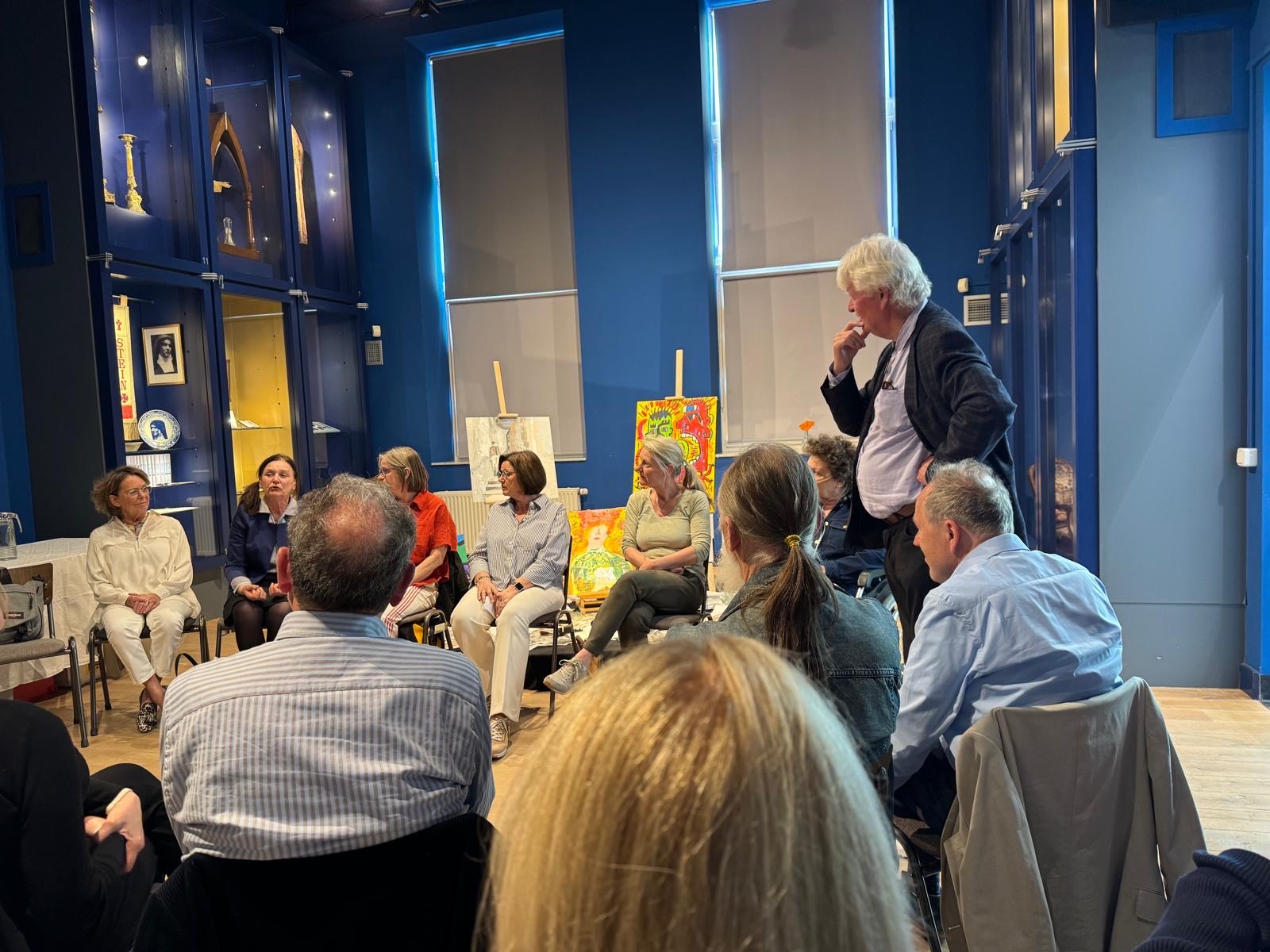
Review of the artist talk ‘’Abstract’’ on Saturday 12 April 2025
After a short welcome speech by Bep Geurts, art historian and publicist Rick Vercauteren will interview Elly Richaerts, Marga Boogaard, Hil van Neer, Nora van Klingeren, Sabine Lintzen and Ingrid Capozzi in an animated manner on Saturday 12 April 2025 at the Museum van de Vrouw in Echt about the origins and meaning of their abstract works of art.
Curator Elly Richaerts starts off smoothly with a lively review of the phased creation of the - in terms of materials and oeuvres - very varied exhibition Abstract. She then zooms in on her constructivist and geometric oeuvre.
In the abstract works of art, which are always built up in four layers, which now and then seem to refer to architecture, the illusion of sophisticated, invented spaces is central in a colouristically beautiful way. Elly enthusiastically explains how, using delicate underdrawings, well-considered harmonies and ingenious reflections, she manages to create much-needed tension in the composition in her abstract art. Elly appears to have a great predilection for repetitive patterns and systemic elements in nature. Creating work always evokes a certain tension that only resolves when the painting is finally completed.
The surprising creation of the magnificently balanced, spatial work of Marga Boogaard is then discussed.
Her abstract, ceramic objects are often preceded by a relatively quick sketch on paper, and are produced in a particularly labour-intensive manner. All the transparent objects in clay are made step by step, line by line, shape by shape, with the utmost precision by hand. The compositional tension between inside and outside appears to be a continuously recurring, central motif. After completing a new work, Marga, having determined that it is really good, subtly applies a meticulous covering layer of porcelain slip in measured doses. Marga sees the realization of shapes and lines as one big, challenging game. If a work unexpectedly does not please, it disappears ruthlessly and recklessly into the trash. Then she starts all over again.
Hil van Neer tells with great passion and precision about the complex and very time-consuming creation of her abstract works of art. For her, paper is always a great challenge. First, she builds up shapes, partly using liters of glue, consisting of layers of newspaper or papier-mâché. She then uses a belt sander to grind away material and is left with residual shapes that are then covered with white or colored paper and glue again. They are then deliberately sanded down again. Until a fascinating shape with a striking structure or an intriguing tension between the top and bottom of the object is created. Sometimes it seems as if the skin of the paper has been optically transformed into velvet. Now and then Hilhaar literally saws through objects in progress. In the open parts, stunningly attractive, colourful miniature worlds suddenly unfold, almost like a superior by-catch.
Nora van Klingeren talks energetically, humorously and also pleasantly relativizing, about the creation of her abstract art in silk and wool. Surprisingly, each work begins with a story. A narrative element that is rooted in dealing with the Earth or is directly connected to fragments from the science of climate change. Through personal leaps of thought, she forges all these aspects together into a new, often strongly reduced starting point for creating layered, multi-coloured works in textiles. In a fascinating way, she tells how she arrives at her fascinating images with layers of wool and silk in combination with water and soap. Relatively fast processes in which the shrinking and felting of the material used are central. As a bonus, the abstract works of Nora van Klingeren, which are rightly hung in the open space, can always be viewed from two (different) sides. Finally, Nora points out that she always works in mirror image during the creation process.
Sabine Lintzen explains very precisely and pleasantly structured how she has specialized in the past years - in close collaboration with a small team - in the realization of unique glass objects, both in the form of polychrome objects and unique vases in different colors. She clearly outlines how the process goes from early imagination via assembly of various components to the full maturity of a work of art. She in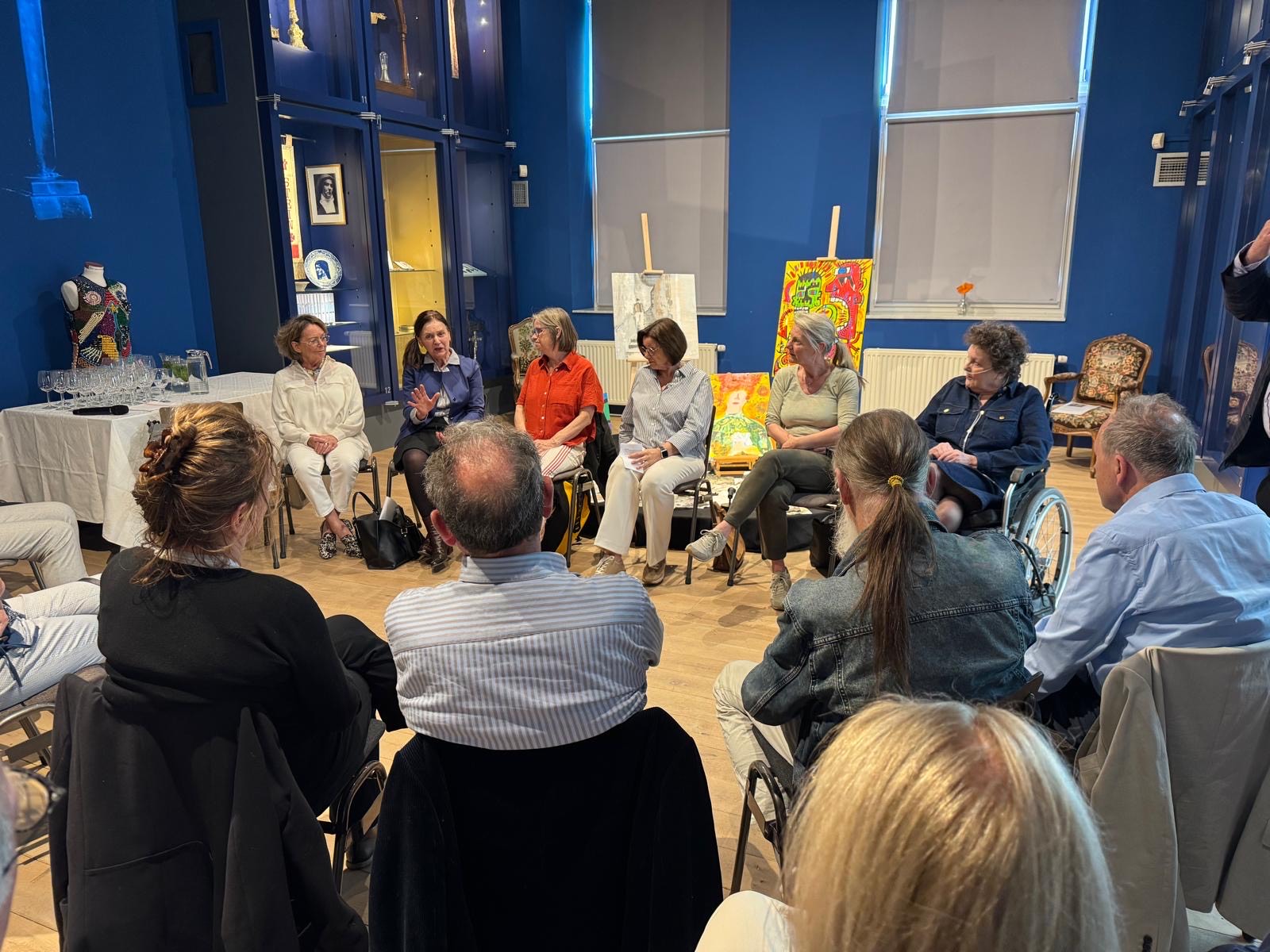 dicates that from a young age she has had a great interest in flower and cell shapes from the botanical world and is interested in repeating, geometric shapes in rocks and minerals. In her studio she forms - with the blown glass - all the aforementioned elements into literally and figuratively layered,
dicates that from a young age she has had a great interest in flower and cell shapes from the botanical world and is interested in repeating, geometric shapes in rocks and minerals. In her studio she forms - with the blown glass - all the aforementioned elements into literally and figuratively layered,
Ingrid Capozzi, who also has a smooth tongue, essentially operates as an alchemist. Combining and experimenting, she brings together diverse materials such as flat glass, textiles, paper, metal and even acrylic and oil paint in an exciting way in her abstract works. In terms of composition, often within square shapes, she effortlessly combines an adventurous nature with pure courage. Variety is the spice of life! At the same time, Ingrid points out that her complex-looking, abstract-organic works of art often contain clearly defined zones as well as clear boundaries. Within these focused, self-chosen frameworks, there is enormous freedom, by way of counterpoint. ‘’I cannot live without freedom,’’ she states frankly. Precisely for that reason, she embraces earth, water, air and vegetation figuratively and suggestively in her work. But never, ever in a concrete, direct or realistic way. At the end of the interview, all those involved once again reflect on the meaning of the words abstract and abstract. At the end, Sabine remarks: ‘‘We add something new to the world, without being asked. We are almost continuously, proactively creating. And that feels really good!’’ The fascinating meeting is then concluded with a heartfelt applause from the enthusiastic audience for the six exhibitors and for organizer Elly Richaerts.
Rick Vercauteren
Venlo NL
Announcement:
March 26 to April 1, showcase exhibition of my paintings at Roman dresses in Sittard.
Address: Voorstad 19-21.

 English (United Kingdom)
English (United Kingdom)  Nederlands (Dutch)
Nederlands (Dutch) 


